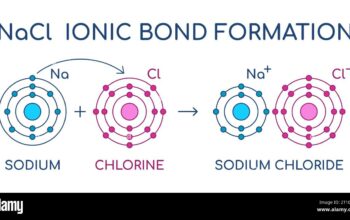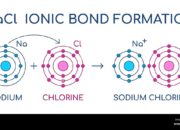The intricate tapestry of life begins at the microscopic level, where atoms—the fundamental building blocks of matter—engage in a symphony of interactions, ultimately giving rise to living cells. Understanding how these atoms unite to form the complex structures that characterize biological systems invites not only a comprehension of chemistry but also a reflection on the exquisite nature of life itself. This exploration reveals a journey from the most elementary particles to the vibrant cellular organisms that populate our planet.
At the heart of this process lies the atom, comprised of protons, neutrons, and electrons. Protons and neutrons are housed within the nucleus, while electrons orbit this nucleus in defined energy levels. The behavior of these electrons, primarily in the outermost shell, is pivotal in determining how atoms interact with one another. Such interactions are governed predominantly by the principles of atomic bonding, which can be broadly categorized into ionic, covalent, and metallic bonds. Each of these bond types facilitates different forms of molecular architecture, setting the stage for the development of cellular structures.
Ionic bonds occur when atoms transfer electrons, resulting in electrostatic attractions between charged ions. For example, the classic interaction between sodium and chlorine leads to the formation of sodium chloride, or table salt. This transfer not only stabilizes the resulting compounds but also showcases the duality of chemical behavior—whereby atoms exhibit both a tendency to merge and a drive towards stability. Such ionic compounds often serve as electrolyte solutions in biological systems, contributing to vital cellular functions, including nerve impulse conduction and muscle contraction.
On the other hand, covalent bonds emerge through the sharing of electrons between atoms, endowing molecules with distinct shapes and properties. This type of bonding is predominantly observed in organic compounds, which form the backbone of cellular biochemistry. For instance, carbon—being tetravalent—can form stable long chains and rings by covalently bonding with other carbon atoms and various functional groups like hydroxyl or carboxyl. This propensity allows for the creation of requisite macromolecules: carbohydrates, lipids, proteins, and nucleic acids, each integral to cellular structure and function.
Proteins, for example, arise from the intricate sequences of amino acids held together by peptide bonds, a specific type of covalent bond. The folding and conformational changes of these proteins define their functional capabilities, from enzymatic reactions to structural support. In this manner, the combination of atoms transcends mere physical association, evolving into complex mechanisms that sustain life at cellular levels.
The formation of nucleic acids, such as DNA and RNA, is another fundamental outcome of atomic interactions. Nucleotide units, comprised of a sugar, phosphate group, and nitrogenous base, link through covalent phosphodiester bonds to form the backbone of DNA. The unique pairing of bases—adenine with thymine, and cytosine with guanine—creates a duplex structure that encodes genetic information, guiding cellular function and heredity. The replication and transcription of these nucleic acids are essential for cellular integrity, growth, and reproduction, further exemplifying how atomic interactions build the scaffolding of life.
In addition to the intricate bonds facilitating molecular formation, the spatial arrangement of these molecules within a cell plays an equally pivotal role. The cell membrane, a complex bilayer of phospholipids embedded with proteins, governs the transport of substances and communication between the internal cellular environment and the external milieu. This selective permeability is not merely a passive barrier but an active participant in cellular homeostasis and signaling pathways, illustrating how atomic arrangements govern life processes.
Moreover, the study of atomic interactions extends into the realms of energetic considerations. The principles of thermodynamics illuminate how energy transfer drives biochemical processes. The formation of ATP (adenosine triphosphate), the cellular energy currency, arises from the bond energies associated with phosphate groups. Cells harness the energy stored within these bonds to fuel metabolic activities, further intertwining chemistry with the essence of life. The transition from simple atomic entities to complex cellular machinery underscores the sophisticated nature of biological systems.
The synthesis of cells from atoms does not occur in isolation. The interactions of a multitude of atoms and molecules, influenced by environmental conditions and energy dynamics, orchestrate the emergence of life. The processes of abiogenesis—the origination of life from non-living matter—fascinate scientists who seek to unravel the conditions that may have led to the first self-replicating structures. This inquiry into the dawn of cellular life paves the way for future explorations in astrobiology and synthetic biology, asking profound questions about life’s potential beyond Earth.
Ultimately, the transformation of atoms into living cells reveals a narrative of intricate complexity, underscored by fundamental principles of chemistry and biology. This exploration showcases not only the marvel of atomic interactions but also emphasizes the interconnectedness of life at all levels—from atomic to cellular to the vast tapestry of ecological systems. Such understanding inspires wonder and curiosity, proving that the simplest of matters, when woven together, can yield the profound and magnificent phenomena we call life.












